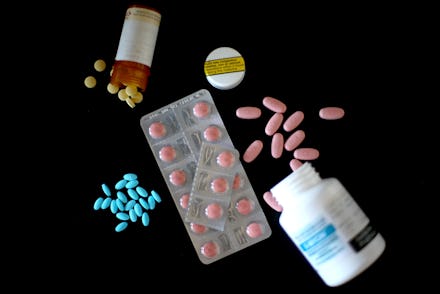Here's How Much More the US Spends on Medicine Than Everyone Else, in 6 Charts

The world has been repulsed by Martin Shkreli, the Turing Pharmaceuticals head and former hedge fund manager who bought the rights to the anti-protozoal drug Daraprim and raised the price by 5,500% overnight.
But while Shkreli's price increase has been denounced by critics as a cash grab that will harm people vulnerable to protozoal infections (like HIV and cancer patients), the pharmaceutical industry at large has been doing similar things for years. Shkreli just provides a convenient villain.
Americans are uniquely screwed when buying medication. Medicine in the U.S. costs much more than in any other comparable countries, due largely to the U.S.' dysfunctional health care system.
According to the Organization for Economic Cooperation and Development, people in the U.S. spend more per capita on medicine than any other surveyed OECD country by large margins, at around $1,000 a year per person. The next closest country is Canada at roughly $771 per year, and many other wealthy countries spend less than half of what the U.S. does on a per capita basis.
Part of the reason U.S. consumers pay so much for their drugs is a lack of bargaining power. Other countries with universal health care systems negotiate the price of prescription medication with pharmaceutical companies. But in the U.S., only Medicaid and the Department of Veterans Affairs can do so, leaving Medicare out. Instead, Medicare drug prices are negotiated by insurance companies, which have much less leverage to bring down the price of drugs.
The situation is further complicated by a lack of competition in certain drug markets. Twenty-year patent rights for most newly developed drugs ensure many newer treatments remain expensive and unavailable in generic forms.
These factors, along with several others, combine to lead to Americans paying, on average, much more for the same prescription drugs than any other comparable country.
Drug companies say they're saving lives. As people in other countries pay significantly less for prescription drugs, which in many cases are made by U.S. companies, some argue U.S. consumers are essentially subsidizing drug prices in the rest of the world by paying a hefty premium at home. The companies also say the profits enable them to make new, more effective drugs that are expensive to develop.
Shkreli made a similar argument in his defense. Turing Pharmaceuticals issued a statement to Fortune saying the company was "targeting investments that both improve on the current formulation and seek to develop new therapeutics with better clinical profiles that we hope will help eradicate the disease."
For the pharmaceutical companies' part, it's important to note that millions of dollars generated from drug sales are put into research and development for other drugs, the vast majority of which fail. For every successful pill or treatment an American company develops, there are thousands of others that failed during the research phase. The companies still need to pay for all that development, and those costs are often built into the prices of the successful drugs.
However, a number of factors should lessen those costs, including government grants. According to health care researcher Gerard Anderson, most drug companies spent just 12% of their revenue on medical innovation.
"We pay twice as much for brand-name drugs as most other industrialized countries," Anderson told the Washington Post. "But drug companies spend only 12% of their revenues on innovation. So yes, some of that money goes to innovation, but only 12% of it."
A 2011 study by University of Victoria researchers argued the supposedly extreme price of medication development is exaggerated by "industry-supported economists." The researchers also wrote much of the research cost is bloat, since "85% of new drugs [are] little or no better than existing ones."
The high prices probably aren't necessary. Daraprim, as with many other drugs that have seen their prices shoot through the roof, is already considered an effective treatment with a proven clinical profile. Medical experts consulted by the New York Times said there was no need to raise the price for research and development purposes, with Icahn School of Medicine at Mount Sinai infectious diseases chief Dr. Judith Aberg telling the paper she suspected there was a "very dangerous [...] profit-driven" motive behind the price increase.
All the while, an aging U.S. public spends more and more on drugs with every passing year.
Pharmaceutical companies boast some of the highest profit margins of any industry, making the ever-rising cost of drugs seem much like a matter of profit rather than good intentions. Nine out of 10 of the world's largest pharmaceutical companies spend more on sales and marketing than basic research, while a system of patent rights is designed to protect profits rather than increase medical knowledge.